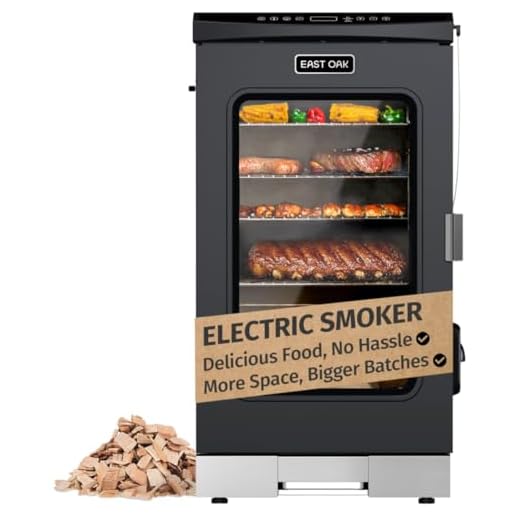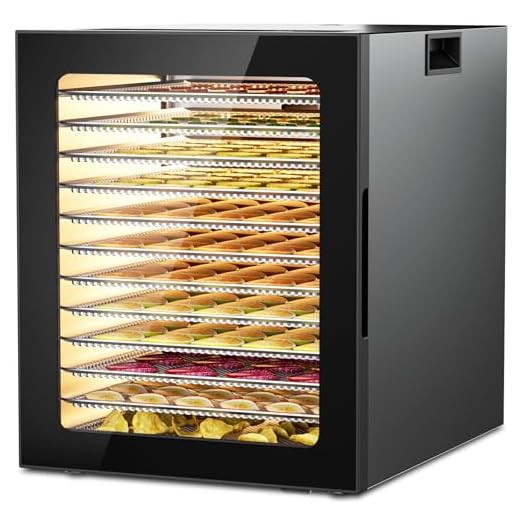



Preserving cooked meat without refrigeration is an important skill to have, especially in situations where access to electricity or refrigeration is limited. Whether you’re camping, traveling, or facing a power outage, knowing how to store cooked meat safely can prevent food waste and keep you well-fed.
One method to preserve cooked meat without refrigeration is through canning. Canning involves sealing cooked meat in airtight containers, such as glass jars, to create a vacuum seal that keeps bacteria out and preserves the meat. This method is effective for long-term storage and can extend the shelf life of cooked meat for up to a year or more.
Drying is another popular technique used to preserve cooked meat. By removing the moisture from the meat, you inhibit the growth of bacteria and extend its shelf life. This can be accomplished through air drying, where cooked meat is hung in a well-ventilated area until it becomes dry and jerky-like. Alternatively, using a food dehydrator can expedite the drying process.
Lastly, smoking is a method that not only preserves cooked meat but also adds flavor and enhances its taste. The smoking process involves exposing cooked meat to smoke from burning wood chips or sawdust. The smoke acts as a preservative by inhibiting bacterial growth and sealing the meat’s surface. Smoking is an excellent option for preserving larger cuts of meat, such as ham or sausages.
Preserving Cooked Meat Without Refrigeration: A Guide
Introduction
When it comes to preserving cooked meat without refrigeration, there are several traditional methods that have been used for centuries. These methods allow you to keep your cooked meat fresh and edible for longer periods of time, even without access to modern refrigeration techniques. In this guide, we will explore some of the most effective and practical ways to preserve cooked meat without refrigeration.
1. Salting
One of the oldest and most reliable methods for preserving cooked meat is salting. This technique involves covering the cooked meat with a layer of salt, which draws out moisture and creates an inhospitable environment for bacteria. To salt your meat, simply coat both sides of the meat with a layer of salt and let it sit for several hours to overnight. Afterward, rinse off the excess salt and pat the meat dry before storing it in a cool and dry place.
2. Smoking
Another popular method for preserving cooked meat is smoking. Smoking not only enhances the flavor of the meat but also helps to preserve it. The smoke acts as a natural preservative and prevents the growth of bacteria. To smoke your cooked meat, you will need a smoker or a grill. Simply place your cooked meat in the smoker and let it smoke for several hours until it reaches the desired level of preservation. Once smoked, store the meat in a cool and dry place.
3. Drying
Drying is another effective method for preserving cooked meat without refrigeration. This technique involves removing all the moisture from the meat, making it inhospitable for bacteria to grow. To dry your cooked meat, thinly slice it and hang the slices in a well-ventilated area. You can also use a food dehydrator or an oven set to a low temperature. Allow the meat to dry until it becomes leathery and fully dehydrated. Once dried, store the meat in an airtight container in a cool and dry place.
4. Canning
Canning is a modern preservation method that can also be used to preserve cooked meat without refrigeration. This method involves placing the cooked meat in jars or cans and heating them to a high temperature to kill all bacteria. The jars are then sealed, creating a vacuum seal that prevents any new bacteria from entering. Canned meat can be stored in a pantry or cellar for long periods of time. However, it is important to carefully follow canning procedures to ensure the safety of the preserved meat.
Conclusion
Preserving cooked meat without refrigeration is possible by using various traditional methods such as salting, smoking, drying, and canning. These methods have been used for centuries and are still effective today. Whether you are camping, in a power outage, or simply looking to prolong the shelf life of your cooked meat, these methods will allow you to enjoy fresh and preserved meat without the need for refrigeration.
| Method | Advantages | Disadvantages |
|---|---|---|
| Salting | Simple and inexpensive | Can alter taste and texture |
| Smoking | Enhances flavor | Requires specialized equipment |
| Drying | Long shelf life | Takes time and patience |
| Canning | Safe and convenient | Requires proper technique |
Traditional Methods of Preservation
Before the advent of modern refrigeration methods, people relied on various traditional techniques to preserve cooked meat for longer periods. These methods allowed them to store meat without it spoiling and ensured a steady food supply during times when refrigeration was not available or practical.
Here are some traditional methods of meat preservation:
- Smoking: Smoking meat is an ancient preservation method that involves exposing it to smoke from burning wood or other plant materials. The smoke inhibits the growth of bacteria and other microorganisms, preventing spoilage. Additionally, the heat from smoking helps to dehydrate the meat, further extending its shelf life.
- Curing: Curing is another popular method of meat preservation. It involves the use of salt, sugar, and various spices to preserve the meat. The curing process removes moisture from the meat, which inhibits the growth of bacteria. Cured meats, such as bacon and ham, can be stored at room temperature for extended periods.
- Drying: Drying meat involves removing moisture from the meat, which prevents bacterial growth. This can be done by air drying or using a food dehydrator. Dried meats, like jerky, can last for months without refrigeration.
- Salt preservation: Salt has been used for centuries to preserve various types of food, including meat. By covering the meat in salt, it creates an inhospitable environment for bacteria, preventing spoilage. The excess salt is then washed off before consumption.
- Pickle curing: Pickling involves preserving meat in a salty, acidic solution, such as vinegar or brine. This method not only inhibits bacterial growth but also imparts a unique flavor to the meat. Pickled meats, like corned beef, can be stored without refrigeration.
These traditional preservation methods have stood the test of time and continue to be used by people around the world. While modern refrigeration has made these techniques less necessary, they are still valuable skills to have in case of emergencies or when cooking meat without access to a refrigerator.
Salt Curing: A Time-Tested Technique
Salt curing is a traditional method that has been used for centuries to preserve cooked meat without the need for refrigeration. This technique involves coating the meat with salt, which helps to draw out moisture and create an environment inhospitable to bacteria.
How Does Salt Curing Work?
When meat is salt cured, the salt pulls water out of the cells through osmosis. This not only helps to preserve the meat but also enhances its flavor and texture. The salt forms a protective layer around the meat, which inhibits the growth of spoilage-causing bacteria.
The Salt Curing Process
To salt cure cooked meat, start by selecting a good-quality salt, such as kosher or sea salt. Coarsely grind the salt, if necessary, to ensure an even coating. Next, thoroughly coat the meat with the salt, making sure to cover all surfaces.
Place the salted meat on a wire rack or in a shallow dish and refrigerate for a specified period, depending on the size and type of meat. The salt will slowly draw out moisture from the meat, creating a brine that helps to further preserve the meat.
After the curing period, rinse off any excess salt from the meat and pat dry. The meat can now be sliced and consumed or stored for later use. It is important to note that salt-cured meat will still have a salty taste, so it’s best to adjust seasoning accordingly in recipes.
| Salt Curing Pros | Salt Curing Cons |
| – Effective preservation method | – High sodium content |
| – Enhances flavor and texture of meat | – Can be time-consuming |
| – Requires minimal equipment | – Can modify the taste of the meat |
Overall, salt curing is a reliable and time-tested technique for preserving cooked meat without refrigeration. It is essential to follow proper salt curing methods to ensure safety and quality. By understanding the process and taking necessary precautions, you can enjoy salt-cured meat with peace of mind.
Smoke Preservation: Adding Flavor and Shelf Life
One traditional method of preserving cooked meat without refrigeration is through smoke preservation. This technique not only helps prevent spoilage but also adds distinct flavors to the meat, enhancing its taste.
How Smoke Preservation Works
Smoke preservation works by exposing the cooked meat to smoke generated by burning wood or other combustible materials. The smoke contains a variety of chemical compounds, such as phenols and acids, which have antimicrobial properties.
When the meat is exposed to the smoke, these compounds penetrate its surface, creating a protective barrier that inhibits the growth of bacteria and other microorganisms. Additionally, smoke contains antioxidants that help prevent oxidative deterioration, further extending the shelf life of the meat.
The Smoking Process
To preserve cooked meat using smoke, follow these steps:
- Preheat a smoker to the desired temperature, typically between 175°F (80°C) and 225°F (107°C).
- Hang the meat on hooks or place it on grates inside the smoker, ensuring that there is enough space between the pieces for the smoke to circulate.
- Select the wood or combustible material to create the smoke. Popular options include hickory, applewood, and mesquite.
- Ignite the wood, allowing it to burn until it produces smoke. Once the smoke is generated, regulate the airflow in the smoker to maintain a consistent level of smoke.
- Smoke the meat for the recommended time, which will depend on its size and type. Generally, larger cuts of meat require longer smoking times.
- Monitor the internal temperature of the meat using a meat thermometer to ensure it reaches the recommended safe temperatures. This step is crucial for food safety.
- Once the meat reaches the desired level of smoke and internal temperature, remove it from the smoker and let it cool before packaging or consuming.
By following these steps, you can successfully preserve cooked meat through smoking, enhancing its flavor and extending its shelf life. However, it is essential to note that smoked meat should still be handled and stored properly to maintain its quality and safety.
Fermentation: A Natural and Effective Method
Fermentation is a natural and effective method for preserving cooked meat without refrigeration. It has been used for centuries to extend the shelf life of food and enhance its flavors. The process involves the conversion of sugars and carbohydrates into alcohol and acids by the action of bacteria and yeast. The resulting environment is acidic, which inhibits the growth of harmful bacteria.
There are various types of fermentation that can be used to preserve cooked meat:
- Lactic acid fermentation: This type of fermentation is commonly used for preserving meats like sausages and ham. Lactic acid bacteria are added to the meat, which convert the sugars into lactic acid. The low pH created by the lactic acid inhibits the growth of spoilage bacteria.
- Acetic acid fermentation: Vinegar, which contains acetic acid, can be used to preserve cooked meat. The acidic environment created by the acetic acid inhibits the growth of bacteria and enhances the flavor of the meat.
- Alcohol fermentation: Alcohol can also be used to preserve cooked meat. Yeast is added to the meat, which converts the sugars into alcohol. The alcohol acts as a natural preservative by inhibiting the growth of bacteria.
When fermenting cooked meat, it is important to ensure proper hygiene and sanitation to prevent contamination. Here are some key steps to follow:
- Clean and sanitize all utensils and containers.
- Choose fresh and high-quality meat.
- Trim off any excess fat or gristle.
- Cut the meat into small pieces or slices.
- Add the desired fermentation agent, such as lactic acid bacteria, vinegar, or yeast.
- Place the meat and fermentation agent in a clean and airtight container.
- Store the container in a cool, dark place for the fermentation process to occur.
- Check the meat regularly and discard any that shows signs of spoilage.
- Once the desired level of fermentation is reached, the meat can be consumed or further processed for long-term storage.
Fermentation is a versatile and cost-effective method for preserving cooked meat without the need for refrigeration. It allows for the creation of unique flavors and can extend the shelf life of meat for months. However, it is important to understand and follow proper techniques and food safety practices to ensure the safety and quality of the preserved meat.
Drying: Removing Moisture for Longevity
One of the oldest and most effective methods for preserving cooked meat without refrigeration is through drying. By eliminating moisture, the growth of bacteria and other microorganisms is inhibited, ensuring the longevity of the meat.
How does it work?
The process of drying meat involves removing the moisture content, which helps in preventing spoilage. This method has been used for centuries in various cultures as a means of food preservation.
There are two primary methods for drying cooked meat:
- Air Drying: In this method, the cooked meat is thinly sliced and placed in a well-ventilated area with low humidity. The air helps in evaporating the moisture from the meat, gradually dehydrating it.
- Dehydrators: Using a food dehydrator is a more modern approach to drying meat. These devices are specifically designed to remove moisture efficiently. The meat is sliced and arranged on the trays of the dehydrator, which then blows warm air over the meat, facilitating the drying process.
Regardless of the method chosen, it is important to ensure that the meat is fully dried. If any moisture remains, it can lead to spoilage and the growth of bacteria.
Benefits of Drying Meat
Drying meat offers several benefits:
| Benefits | Description |
|---|---|
| Long Shelf Life | Dried meat can be stored for months, making it an excellent option for long-term food storage. |
| Lightweight and Portable | Without moisture, the meat becomes lightweight and easy to carry, making it an ideal choice for camping trips or hiking adventures. |
| Nutritional Value | The drying process helps in retaining the nutritional value of the meat, including proteins, vitamins, and minerals. |
| Convenience | Dried meat is readily available and can be used in various dishes without the need for refrigeration. |
Overall, drying offers a simple and effective way to preserve cooked meat without refrigeration. By removing moisture, the meat can be safely stored for extended periods while still maintaining its taste and nutritional value.
FAQ
What are some methods of preserving cooked meat without refrigeration?
There are several methods you can use to preserve cooked meat without refrigeration. One method is to can the meat using a pressure canner. Another method is to dehydrate the meat by either air-drying it or using a food dehydrator. Smoking the meat is also a popular method of preservation.
How long can cooked meat be preserved without refrigeration?
The length of time that cooked meat can be preserved without refrigeration depends on the preservation method used. Canned meat can last for several years when stored properly. Dehydrated meat can last for a few months to a year, depending on the storage conditions. Smoked meat can last for a few days to a couple of weeks, depending on the smoking process and storage conditions.
What are the benefits of preserving cooked meat without refrigeration?
Preserving cooked meat without refrigeration can be beneficial in several ways. It allows for longer storage of meat, which can be especially helpful in emergency situations or when access to refrigeration is limited. It also helps to reduce food waste by allowing you to preserve leftover cooked meat instead of throwing it away. Additionally, preserving meat without refrigeration can provide unique flavors and textures to the meat, such as the smoky flavor from smoking.
Are there any safety concerns when preserving cooked meat without refrigeration?
Yes, there are some safety concerns when preserving cooked meat without refrigeration. It is important to follow proper food safety practices to prevent the growth of harmful bacteria. This includes ensuring that the meat is cooked to the appropriate temperature before preservation, using clean and sterilized containers for canning, proper storage conditions for dehydrated meat, and maintaining the correct temperature and smoking duration for smoked meat. It is also important to be mindful of the expiration dates or recommended storage times for each preservation method.








